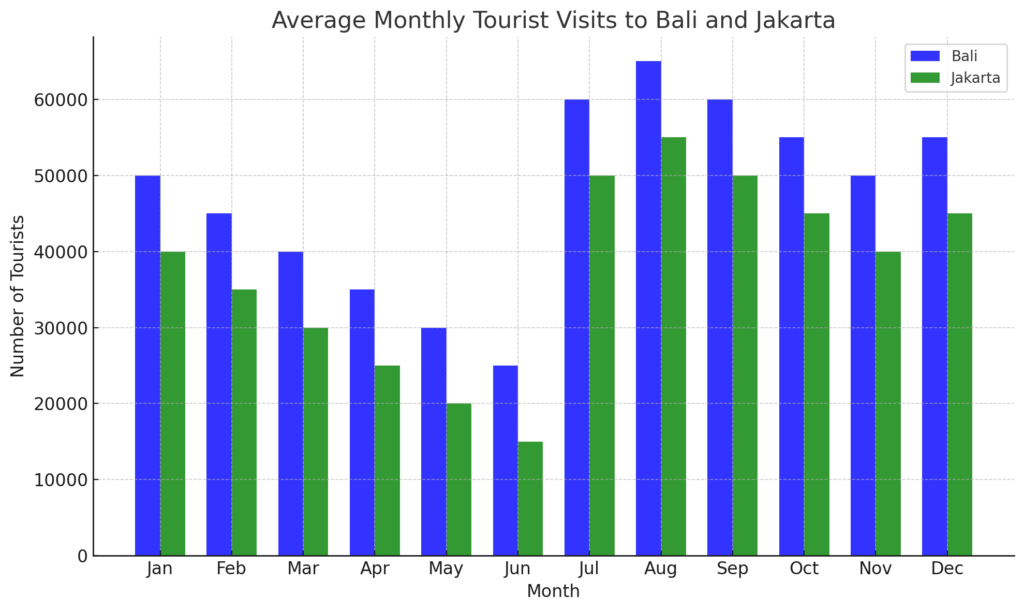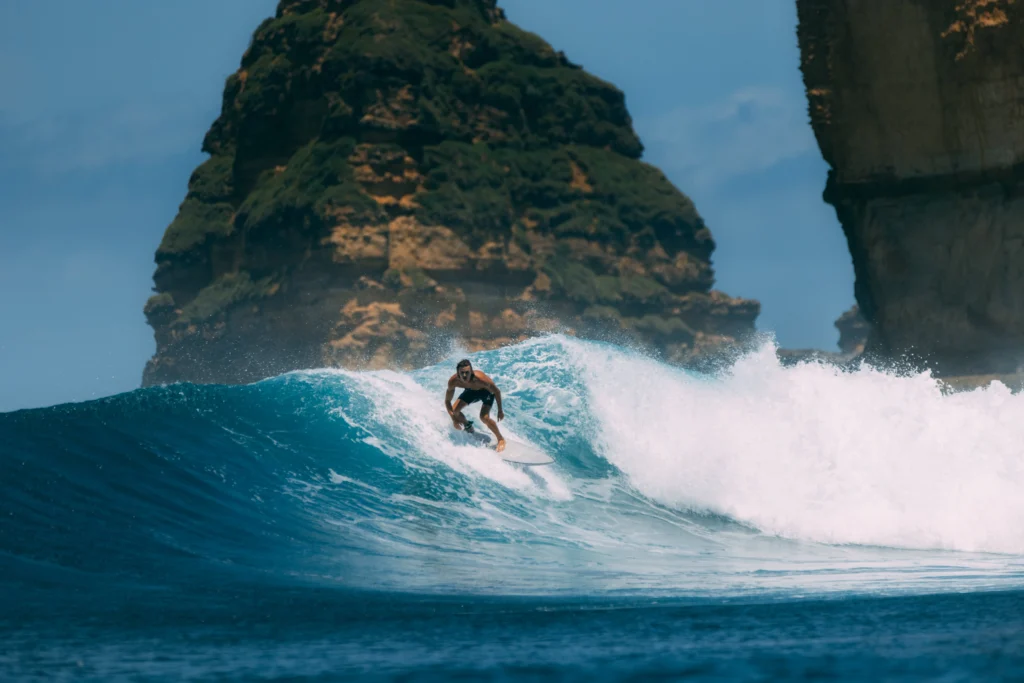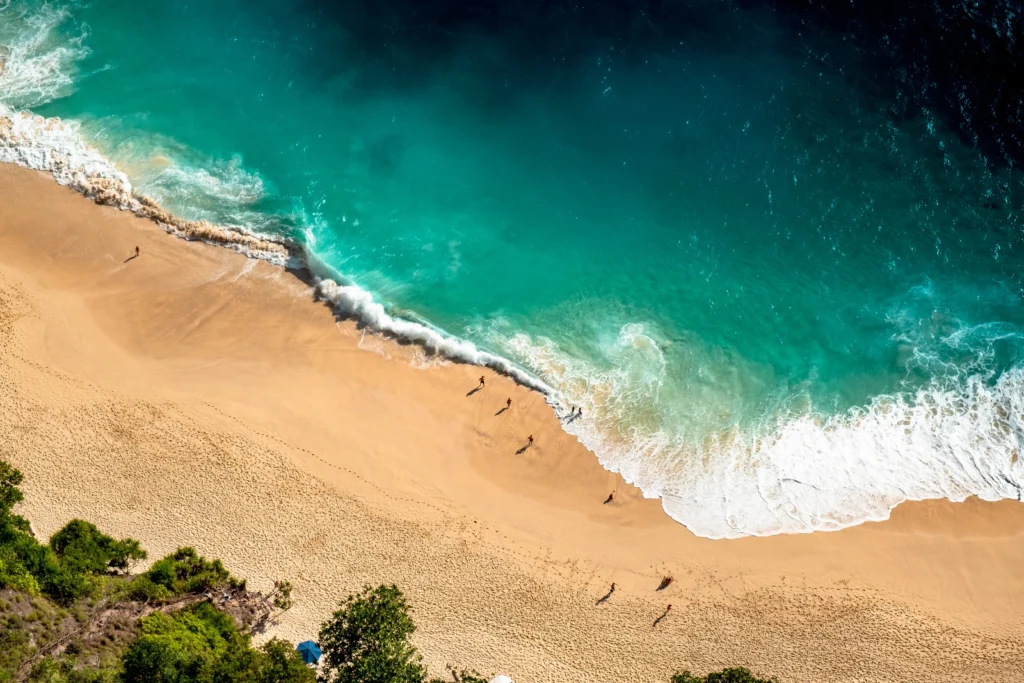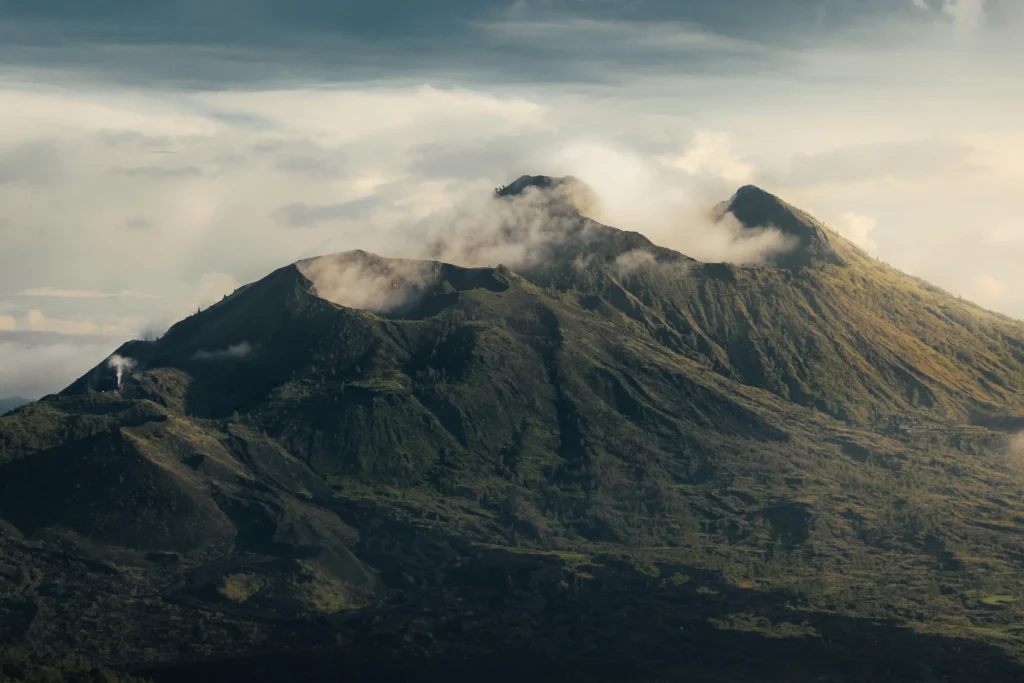The Ultimate Guide: Best Time to Visit Indonesia
Indonesia, with its sprawling archipelago of over 17,500 islands, presents an alluring destination that promises adventure, relaxation, cultural immersion, and natural wonder. From the lush, terraced rice fields of Bali to the vibrant streets of Jakarta, each island offers a unique experience, making Indonesia a perennial favorite for travelers around the world. However, the vastness of the country also means that it experiences a wide range of weather patterns, affected in part by the global phenomena of climate change. The best time to visit Indonesia can vary significantly depending on where and when you travel, as well as what you want to do.
- The Ultimate Guide: Best Time to Visit Indonesia
- Introduction
- Factors Influencing Your Visit
- Understanding Indonesia's Seasons
- Monthly Travel Insights
- January: A Quiet Start to the Year
- February: Cultural Richness Amidst the Rain
- March: Cultural Silence and Spiritual Reflection
- April: Shoulder Season Sweet Spot
- May: The Dry Season Beckons
- June: Diverse Activities in Full Swing
- July and August: The Height of High Season
- September: Surfing, Sunsets, and Savings
- October: A Mixture of Sun and Rain
- November: Indoor and Outdoor Exploration
- December: Festive Spirit Amidst the Showers
- Regional Recommendations
- Festivals and Cultural Events
- Travel Tips for Each Season
- Conclusion: Best Time to Visit Indonesia
- Call to Action
Introduction
The Indonesian archipelago stretches across a significant portion of the Equator, with landscapes ranging from volcanic mountains to tranquil beaches, dense rainforests, and bustling metropolitan areas. This geographical and cultural richness means that any time of year can be the perfect time to visit, depending on your travel goals. Yet, with climate change altering weather patterns, it has become more important than ever to plan your trip carefully. Unpredictable heavy rainfall, shifting seasons, and even rising sea levels can impact the traditional dry and wet seasons, which are pivotal in deciding the best time to visit Indonesia.
The Indonesian Meteorological, Climatological, and Geophysical Agency (BMKG) provides valuable insights into the nation’s climatic conditions, helping travelers make informed decisions. By understanding the nuances of Indonesia’s best weather and the activities you’re most interested in, you can tailor your visit to ensure it lives up to every expectation.
Factors Influencing Your Visit
While weather is a critical factor in determining the best time to visit, it’s not the only consideration. The perfect travel season for you might also depend on:
- Outdoor Activities: Indonesia is renowned for its world-class surfing, with spots like Uluwatu and Kuta in Bali drawing surfers from across the globe. Volcano climbing is another popular activity, with Mount Bromo in East Java and Mount Rinjani in Lombok offering spectacular views to those who make the ascent. Wildlife enthusiasts flock to places like the rainforests of Borneo and Sumatra, hoping to catch a glimpse of orangutans in their natural habitat.
- Cultural Festivals: Indonesia’s cultural calendar is brimming with vibrant festivals that offer a glimpse into the nation’s rich traditions. The Bali Arts Festival and the Raja Ampat Sea Festival are just two examples of events that attract visitors looking for unique cultural experiences.
- Crowd Avoidance: Some travelers prefer to visit during quieter times to avoid the crowds that can come with peak tourist season. Understanding when these peak times are, which typically align with global holidays like Christmas and New Year’s Eve or the European summer holidays, can help you plan a more peaceful getaway.
By considering these factors alongside weather patterns, you can choose the best time to visit Indonesia for an experience that aligns with your personal travel preferences.
Understanding Indonesia’s Seasons
Indonesia’s proximity to the equator means it experiences a tropical climate, characterized by two main seasons: the dry season and the wet season. The dry season, which generally runs from May to September, is marked by lower humidity levels, less rainfall, and more sunshine, making it the most popular time for tourists to visit. During these months, the days are consistently warm and nights are cooler, creating perfect conditions for lounging on beaches, diving in clear waters, and exploring the islands’ diverse landscapes.
Conversely, the wet season spans from October to April. This period is often characterized by higher humidity and heavy rains that can lead to sporadic flooding and disruptions in travel, particularly in regions with less developed infrastructure. However, the rainy season also brings with it a certain charm; the landscape becomes even more lush and vibrant, and there are opportunities for travelers to enjoy the islands with fewer crowds and at lower costs.
Regional Weather Variations It’s important to note that Indonesia’s vast size means that weather patterns can vary significantly from one region to another. For instance, while Bali and Java might be enjoying dry, sunny weather, the Maluku Islands and West Papua could be experiencing their own wet season, with increased rainfall. Understanding these regional differences is key when planning your trip, as the best time to visit Indonesia can depend greatly on where in the archipelago you intend to go.
High Season: Busy but Beautiful (July–August, Christmas & New Year’s Eve)
During the high season, Indonesia truly comes alive. The weather is generally at its best, with clear, sunny days and minimal rainfall, making it an excellent time for beach parties and various outdoor adventures such as trekking, surfing, and diving. This period coincides with the European summer holidays, leading to an influx of international tourists and a vibrant, festive atmosphere throughout the islands.
While this can be the ideal time for those looking to enjoy Indonesia’s outdoor offerings at their peak, it’s also when tourist areas are the most crowded and prices for flights, accommodation, and attractions are at their highest. Additionally, certain areas like West Papua and Maluku experience their own unique weather patterns, often with heavy rains even during these months, which can affect travel plans.
Shoulder Season: The Sweet Spot (March–June & September–November)
The shoulder season in Indonesia offers a compelling alternative to the peak season. The weather remains favorable, yet the crowds have dissipated, and prices for travel and accommodation start to drop. This time of year often offers the best conditions for surfing with consistent swells and fewer people in the water, as well as wildlife encounters, particularly in terms of spotting orangutans who are drawn out by the fruiting trees.
However, travelers should be aware that during certain times, especially between September and November, some regions can experience smoke haze due to agricultural fires. This pollution can impact air quality and visibility, so it’s important to stay updated on environmental conditions before planning activities in affected areas like Sumatra and Kalimantan.
Low Season: Tranquil and Affordable (January–February)
The low season brings with it the most significant rainfall, with high humidity and short, intense downpours being common. This can limit some outdoor activities, particularly hiking, as trails can become slippery and unsafe. Wildlife spotting may also be more challenging during these months. Yet, for those willing to brave the occasional shower, the low season offers a more relaxed and intimate experience of Indonesia.
Traveling during this time means fewer tourists, which can translate to more personal interactions with locals and a deeper cultural immersion. It’s also when you’ll find the best deals on accommodation and possibly even at tourist attractions. In areas like West Papua and Maluku, the low season is actually the dry season, offering a unique opportunity to explore these regions under different weather conditions than the rest of the country.
Monthly Travel Insights
To further refine your travel planning, let’s explore what Indonesia has to offer month by month. This detailed guide will provide insights into weather patterns, events, and general tourist trends to help you pinpoint the best time to visit Indonesia for your interests.

January: A Quiet Start to the Year
- January is considered part of the low season due to heavy rains, especially in western regions like Jakarta and Sumatra. However, certain eastern areas like the Maluku islands often experience less rainfall and can be quite pleasant.
- After the holiday rush, tourist numbers dwindle, providing a more tranquil atmosphere for those looking to escape the crowds.
February: Cultural Richness Amidst the Rain
- The wet season continues, but with the right planning, it’s still possible to enjoy indoor attractions and the lush, green landscapes that the rains bring.
- February can be an excellent time for cultural events, such as the Cap Go Meh celebrations at the end of the Chinese New Year festivities.
March: Cultural Silence and Spiritual Reflection
- Bali’s Day of Silence (Nyepi) offers a unique cultural experience where the entire island comes to a standstill for reflection and meditation.
- The shoulder season begins, bringing better outdoor conditions and fewer tourists, making it a good time to visit destinations like Lombok and the Gili Islands.
April: Shoulder Season Sweet Spot
- As the rains start to subside, April marks the transition towards the dry season, with improving weather conditions ideal for outdoor activities.
- Ramadan may begin in April, depending on the lunar calendar, which can lead to quieter days and lively evenings after fasting ends.
May: The Dry Season Beckons
- With the start of the dry season, you can expect more consistent sunshine and blue skies, making it one of the best times to visit for beach holidays and outdoor exploration.
- Important cultural dates, such as Vesak Day, offer opportunities to witness religious ceremonies and celebrations.
June: Diverse Activities in Full Swing
- The weather is excellent for a variety of activities, from diving in clear waters to wildlife spotting in Indonesia’s national parks.
- Tourist numbers start to increase as the high season approaches, but it’s still possible to enjoy relatively uncrowded conditions.
July and August: The Height of High Season
- The busiest months for tourism coincide with school holidays and peak travel periods in many countries, resulting in bustling destinations and vibrant nightlife.
- These months are perfect for beachgoers and festival lovers, with events like the Bali Kite Festival adding color to the skies.
September: Surfing, Sunsets, and Savings
- A fantastic time for surfers as the waves remain good and the crowds lessen.
- The end of the high season means more competitive prices for accommodation and activities.
October: A Mixture of Sun and Rain
- October sees the beginning of the transition back to the wet season, making weather conditions more unpredictable.
- This best month offers a mix of cultural activities and the chance for animal encounters with fewer tourists around.
November: Indoor and Outdoor Exploration
- The wet season begins, but the rains are often short-lived, allowing for both indoor and outdoor exploration.
- It’s a great time to visit museums, art galleries, and cultural shows, which are less affected by the weather.
December: Festive Spirit Amidst the Showers
- The wet season is in full swing, with frequent rains, particularly in the afternoon and late evening.
- Despite the wet weather, the festive spirit is high, with Christmas and New Year’s Eve celebrations creating a lively atmosphere across the islands.
By considering your desired activities and the type of experience you wish to have, this monthly guide can help you decide on the best time to visit Indonesia. For up-to-date weather information, sites like AccuWeather can be invaluable resources.
Regional Recommendations
Each region in Indonesia has its own prime time for visitors, influenced by its unique climate, festivities, and attractions. Here’s a closer look at the best times to visit some of Indonesia’s most iconic destinations.
Best Time to Visit Bali: Island of the Gods
- Bali is Indonesia’s most popular tourist destination, offering a blend of stunning natural scenery, vibrant culture, and spiritual heritage.
- The optimal time to visit Bali is during the dry season, particularly from May to June and September, when the weather is sunny, the crowds are fewer, and prices are lower compared to the peak months of July and August.
- Activities like beach lounging, surfing, trekking, and cultural exploration are best enjoyed during these months, with events like the Bali Arts Festival in June and July offering rich cultural experiences.

Best Time to Visit Lombok: Surf and Serenity
- Lombok, with its less commercialized vibe compared to Bali, is renowned for its beautiful beaches, waterfalls, and the majestic Mount Rinjani.
- The island’s surf season peaks from November to March when the swells are ideal for surfers of all levels.
- For trekking and outdoor activities, the drier months of June to August are recommended, providing cooler temperatures or average temperature and clearer skies for hiking.

Best Time to Visit Jakarta: The Urban Experience
- Jakarta, the capital city, is a bustling metropolis known for its historical landmarks, museums, and shopping centers.
- The best time to visit Jakarta is during its dry season from June to September, when the weather is most conducive to exploring the city’s attractions without the interruption of rain.
- Cultural events and festivals are scattered throughout the year, such as the Jakarta Fair, which typically takes place in June and July.

By aligning your travel dates with the optimal seasons for each region, you can enhance your Indonesian adventure, whether you’re seeking relaxation on pristine beaches, cultural immersion, or the thrill of outdoor activities.
For more detailed travel guides on each region, consider visiting official tourism websites like Wonderful Indonesia.
Festivals and Cultural Events
Indonesia’s calendar is dotted with a spectacular array of festivals and cultural events that reflect the country’s diverse heritage and vibrant traditions. Timing your visit to coincide with these celebrations can offer a deeper understanding and appreciation of Indonesian culture.
Bali Arts Festival
- Held annually in June and July, this month-long festival in Bali showcases the island’s artistic and cultural heritage with traditional dance, music performances, and art exhibitions.
- The festival is a perfect opportunity for visitors to experience Balinese culture up close, with colorful parades and lively performances.
Raja Ampat Sea Festival
- Raja Ampat, known for its stunning marine biodiversity, celebrates its oceanic heritage with the Sea Festival, usually held in October.
- The festival features a variety of events, including traditional dance, music, and even underwater photography competitions.
Jakarta Fair
- As one of the largest annual fairs in Indonesia, the Jakarta Fair takes place around June and July, offering a mix of trade exhibitions, music performances, and culinary delights.
- The fair is a celebration of Jakarta’s status as a bustling economic hub and is a fantastic place to sample local cuisine and shop for Indonesian crafts.
Timing your trip with these events not only enriches your travel experience but also provides unique opportunities to engage with locals and participate in Indonesia’s cultural life.
Impact of Ramadan
- Ramadan, the Islamic month of fasting, can significantly influence the daily rhythm of life in Indonesia, which has the world’s largest Muslim population.
- During Ramadan, which falls in March and April, the days are quieter as many locals fast from dawn to dusk. However, the evenings come alive with “buka puasa” or fast-breaking feasts, which are joyous and communal occasions.
- Travel during Ramadan offers a unique cultural perspective, but it’s important to be aware of potential changes in business hours and public services.
For those looking to immerse themselves in Indonesia’s cultural fabric, planning your visit around these festivals and events can be a transformative experience. Always check the dates as some festivals are based on lunar calendars and may shift each year.
To keep up with the latest festival dates and events, websites such as The Jakarta Post can be useful for planning your visit around these cultural highlights.
Travel Tips for Each Season
No matter when you decide to visit Indonesia, being prepared and knowing what to expect can significantly enhance your travel experience. Here are some seasonal travel tips to help you make the most of your Indonesian adventure.
Dry Season Travel Tips (May to September)
- Packing Essentials: Bring lightweight clothing, sunscreen, and a hat to protect yourself from the strong tropical sun. Don’t forget comfortable footwear for exploring temples and natural sites.
- Stay Hydrated: The heat can be intense, especially in urban areas like Jakarta, so carry a reusable water bottle to stay hydrated throughout the day.
- Book in Advance: With the dry season being peak tourist time, it’s wise to book your flights, accommodations, and tours well in advance to secure the best deals and avoid disappointment.
- Respect Local Customs: If you’re visiting during religious holidays or festivals, dress modestly and be mindful of local traditions and etiquette.
Wet Season Travel Tips (October to April)
- Rain Gear: A waterproof jacket or poncho and quick-dry clothing are essential. Consider waterproof bags or cases to protect your electronics and important documents.
- Flexible Itinerary: Sudden rain can change plans quickly, so have a list of indoor activities or be ready to adjust your schedule as needed.
- Health Precautions: The wet season can bring mosquitoes and an increased risk of illnesses like dengue fever. Use insect repellent and consider staying in accommodations with mosquito nets or screens.
- Road Conditions: Be aware that heavy rains can cause road closures or transportation delays. Always check local travel advisories and plan extra time for travel.
Table: Monthly Climate and Event Guide for Indonesia
| Month | Average Temperature (°C/°F) | Average Rainfall (mm/in) | Key Events/Festivals | Recommended Regions to Visit |
|---|---|---|---|---|
| January | 26/79 | 300/11.8 | New Year’s Day | Maluku Islands |
| February | 26/79 | 280/11 | Cap Go Meh | Bali (indoors) |
| March | 27/80 | 210/8.3 | Nyepi Day | Bali, Gili Islands |
| April | 28/82 | 90/3.5 | Ramadan Begins | Lombok |
| May | 28/82 | 70/2.8 | Waisak Day | Java, Sumatra |
| June | 27/80 | 50/2 | Bali Arts Festival | Bali |
| July | 27/80 | 40/1.6 | Jakarta Fair | Jakarta |
| August | 27/80 | 30/1.2 | Independence Day | Throughout Indonesia |
| September | 27/80 | 40/1.6 | Jember Fashion Carnaval | East Java |
| October | 27/80 | 90/3.5 | Raja Ampat Sea Festival | Raja Ampat |
| November | 27/80 | 150/5.9 | – | Jakarta (indoors) |
| December | 26/79 | 280/11 | Christmas | Bali (indoors) |
General Tips
- Cultural Sensitivity: Indonesia is a culturally diverse country with over 300 ethnic groups. Take the time to learn about the customs of the region you’re visiting and show respect for local traditions.
- Local Guides: Hiring a local guide can enrich your experience, providing insider knowledge and supporting the local economy.
- Language: While English is commonly spoken in tourist areas, learning a few basic phrases in Indonesian can go a long way in connecting with locals.
- Travel Insurance: Always travel with comprehensive insurance that covers medical emergencies, trip cancellations, and lost or stolen items.
By following these tips and being mindful of the seasonal variations, you can ensure a memorable and enjoyable trip to Indonesia, no matter what time of year you choose to visit.
For more travel tips and advice, resources such as TripAdvisor’s Indonesia Travel Forum can offer valuable insights from fellow travelers.
Conclusion: Best Time to Visit Indonesia
Indonesia’s allure is year-round, with each season offering its unique charm and possibilities. From the sun-drenched beaches and vibrant festivals of the dry season to the lush landscapes and serene tranquility of the wet season, there is no definitive best time to visit Indonesia. It ultimately comes down to what you want to experience and how you prefer to travel.
Whether you’re seeking thrilling outdoor adventures, cultural immersion, or simply a peaceful retreat, Indonesia’s diverse regions and rich tapestry of experiences cater to every kind of traveler. By considering the insights provided in this guide, you’re well-equipped to decide when to embark on your Indonesian adventure.
Remember that while this guide has been crafted with the latest information available at the time of writing, it’s important to stay updated on travel advisories, weather forecasts, and cultural events. Planning ahead, being flexible, and respecting local customs will ensure that your visit not only meets but exceeds your expectations.
As you prepare to explore the enchanting Indonesian archipelago, let the magic of the islands inspire your journey, and may your travels be filled with unforgettable moments.
For the most current travel information and tips, the Indonesia Travel website is an excellent place to start.
Call to Action
Now that you’re ready to plan your trip to Indonesia, don’t forget to check out the latest travel deals and packages. Whether you’re looking for a luxurious resort stay in Bali, an eco-tour in Kalimantan, or a cultural excursion in Yogyakarta, there’s something for everyone.
We invite you to share your experiences, tips, or questions about traveling to Indonesia in the comments below. Your insights can help fellow travelers make the most of their Indonesian holidays.
Safe travels, and Selamat Jalan (have a good trip)!



